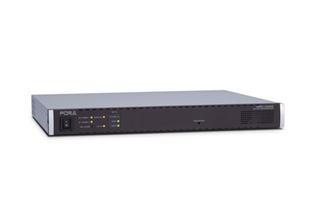NAB 2014: Addressing the 4K Content Gap
While last year's NAB Show was consumed with news of 4K cameras and the greatly improved resolution of four times that of current high definition's 1080 lines, this year vendors will try and help professionals fill out the content creation lifecycle with all types of products and services. Those seriously interested in producing 4K content include movie studios, live sports and entertainment production companies and retailers.
The market for 4KTV, or Ultra HD (UHDTV), is limping along at the moment despite comparatively low set prices, due to a lack of content that adheres to the 3840 pixels x 2160 lines spec for broadcast. While no one is really sure of the format's future, several market studies predict that consumers will come around a lot sooner than they did in the early days of HDTV. One such research firm, Parks Associates, has said that 4K TVs will follow a similar, but faster, growth pattern as HDTVs, which have reached 82% of U.S. households after 15 years on the market.

FOR-A's new URC-4000 4K up converter will help ease the lack of programming for new UHDTV sets. The research report, entitled "4K Today: Bringing Ultra HD to Market" predicts 4K TVs will reach mass-market pricing in the next 2-3 years and top 80% of households in approximately 10-12 years.
Of course, Parks Associates analysts also predict that UHDTV will initially be delivered via online services from companies like Netflix, Comcast and Amazon. Many experts will tell you it won't come from an over-the-air signal any time soon.
At the show visitors will see a plethora of "missing link" products, such as video production switchers, video servers, signal processors and even a HD-to-4K up converter (from FOR-A). The later features a new approach to input and resolution conversion using "spatiotemporal frame interpolation" to detect changes in images with high precision on a pixel-by-pixel basis. Using this process, any distortions from conversions are reduced, and the resolution of still image areas is restored. Products like this will help convert existing libraries to 4K in the interim period.
Vendors (Blackmagic, FOR-A, Panasonic, and Sony) are encouraging customers to buy 4K cameras even if they have no intention of delivering content in 4K. In fact, many of Sony's CineAlta series 4K camera users are shooting in HD resolutions and getting great results.
"A 4K camera produces the best-looking HD images possible and it's only a bit more in price," said Tatsuro Kurachi, director, product marketing and management, Sony. "We think broadcasters will begin to see the value this year and start purchasing 4K equipment to get ready for the day when UHDTV is in many consumer homes."

Sony's F55 4K camera has been used in both HD and UHDTV mode for a variety of live events and studio programming. Another equipment category that should see a lot of interest this year is encoding/transcoding and High Efficiency Video Coding (HEVC) compression. The later is necessary as 4K traffic increases over the next two years and data traffic demands on broadband networks grows dramatically. As a result, service operators will be looking into bandwidth-saving technologies, including next-generation video compression technologies. IP-based delivery companies focusing on this space include Ateme, Elemental Technologies, Fraunhofer Institute, Haivision, Harmonic, Ericsson, and Thomson Video Networks.
There will also be 4K graphics and virtual sets (from ChyronHego, Orad, Pixel Power and Vizrt), as well as 4K routers and signal distribution technology (Cobalt Digital, Evertz, Grass Valley and Snell), in addition to a wide range of postproduction equipment (Adobe Systems, Apple, Autodesk, Avid, Grass Valley, Quantel and many more). We'll also see playout solutions (EVS, Grass Valley, Harmonic, Pebble Beach Systems, Pixel Power, Playbox Technologies and Ross Video Systems) from all of the channel-in-a-box vendors that comply with the UHDTV spec.
To be sure, there is some testing of 4K shooting being done at the various U.S. networks (ABC has tested the Blackmagic 4K cinema camera for its "20/20" program and Sony F55 4K cameras were experimented with on several of "The Jimmy Kimmel Live" show's outdoor live musical performances.). Several TV series such as NBC's "The Blacklist," are also being shot and finished in 4K with an eye toward future syndication needs that might arise.
"This, we feel, is a step in the direction of [creating] a better consumer experience," Doug DeLuca, co-executive producer of "Jimmy Kimmel Live." "I believe in the 4K format. It's clearly the next jump from HD."
Interestingly, on March 29, Poland saw its first ever 4K broadcast of a soccer match between Legia Warsaw and Lech Poznan (from Poland's premier league). It was produced by ATM System and Live Park (Live Park is responsible for all the league's TV transmissions). However, the transmission couldn't be seen by the average viewer, as regular 4K services are not yet offered in Poland.
This year's show is sure to excite the senses in more ways than one.
Get the TV Tech Newsletter
The professional video industry's #1 source for news, trends and product and tech information. Sign up below.
